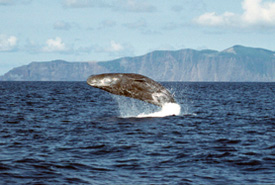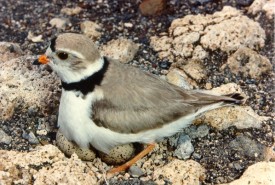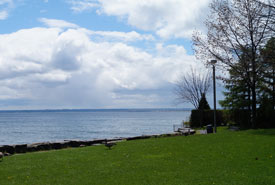Saving our planet: 10 good news conservation stories from 2016
The choices we make about our planet in the next decade are going to impact nature and the well-being of people for generations to come. Both nature and human well-being face some big challenges. Biodiversity continues to be threatened by habitat loss and fragmentation, invasive species and climate change. The number of species assessed as threatened by the International Union for the Conservation of Nature (IUCN) now tops 24,000, and has more than doubled in the last 20 years. We have lost 10 per cent of the planet’s wilderness areas in the last 25 years, and 75 per cent of the Earth’s surface is experiencing measurable impacts from human activities.
The good news is that these challenges all have solutions we can put into action. Some can be implemented relatively quickly, such as increasing the number of protected areas. Others, such as climate change and invasive species, need a long-term commitment. While the challenges are large and complex, they are not insurmountable.
Here are 10 stories from 2016, from Canada and around the world, that show how communities, governments and organizations are providing solutions that are reversing the loss of biodiversity and the ecological services that nature provides. These solutions not only benefit us now, but are building the framework for true ecological sustainability, and redefining the relationship between people and nature.
1. Conserving the world's largest temperate rainforest
In 2016, the Province of British Columbia, First Nations, environmental groups and the forest industry announced increased protection of the 64,000-square-kilometre Great Bear Rainforest along BC’s coast. This historic agreement will protect 85 per cent of the forest from commercial logging. The agreement will also protect globally significant biodiversity; one-quarter of all of the remaining coastal temperate rainforests in the world are in BC. Conservation of this region will also protect 2,500 salmon runs, trees that reach 90 metres in height and the rare, white Kermode black bear, also known as the spirit bear.

Sperm whale (Photo from Wikimedia Commons)
2. Big steps for global marine conservation
The protection of the world’s oceans is one of the key actions needed to conserve biodiversity and ensure food security for more than one billion people. There is now overwhelming evidence that Marine Protected Areas not only help protect biodiversity, but also fish stocks.
In 2016, the Ross Sea in Antarctica became the world’s largest Marine Protected Area at 1.55 million square kilometres, with more than 80 per cent of the reserve under the strictest form of marine protection. In addition, at the IUCN World Conservation Congress, Motion 53, which agrees to a new target of protecting 30 per cent of the world’s oceans by 2030, was passed.
3. Canada starting to make progress in Marine Protected Areas
Canada has not been an early adopter of Marine Protected Areas, but with a goal of protecting 10 per cent of its marine and coastal areas by 2020, there has been some important progress in designating key sites. In 2016, the 2,400-square-kilometre Anguniaqvia Niqiqyuam Marine Protected Area in the Beaufort Sea was established and several new proposed sites have been announced, including BC’s Scott Island and 4,400 square kilometres in the St. Anns Banks off Nova Scotia.
4. Edging closer to protecting 17 per cent of land and inland water areas
Canada is one of more than 175 countries that have agreed that the world needs at least 17 per cent of its land and inland waters protected by 2020. Canada’s progress has been steady, increasing from 9.6 per cent in 2010 to 10.6 per cent at the end of 2015. Many other nations, including France, Ecuador and China, have already met or exceeded the goal. Globally, 14.7 per cent of land and inland waters has been protected, and if current trends continue, the 17 per cent milestone should be reached.

Giant panda (Photo by Chen Wu, Wikimedia Commons)
5. Pandas and plovers: proof we can save endangered species
One of the best measures of conservation is the status of species. Globally, there are more than 24,000 species that are on the IUCN Red List of Threatened Species. In Canada, the number of species assessed in risk categories by the Committee on the Status of Endangered Wildlife in Canada has grown by over 200 in the last decade. Identifying species that are at greatest risk of extinction can lead to action.
In 2016, the giant panda was down-listed from endangered to vulnerable by the IUCN. The population increase has resulted from habitat protection and a successful captive breeding program.

Piping plover (Photo by Ian Sadler)
Here in Canada, the past year saw the continued recovery of the endangered piping plover to its historic nesting sites in Manitoba and on Lake Ontario; proof that habitat protection and population management can increase populations of rare species.
6. Finding ways for people and large carnivores to coexist
In a world where 75 per cent of the land area is experiencing human pressures, one of the biggest challenges we have is maintaining habitat for animals that need large spaces to survive. This usually requires protecting large areas of habitat and making sure these areas are connected with wildlife corridors, and also providing local communities with support so that they can coexist with large animals.
With habitat protection, community support and, in some cases, active reintroduction, parts of the world are seeing a “rewilding,” with the return of large animals. From black bears in the U.S. southwest, to wolves in western Europe and California, to the Persian leopard in the Caucasus region, this year we witnessed a number of examples of how conservation efforts can restore populations of large carnivores.
7. Canadian sustainability goals
This year, Canada released the 2016-2019 Federal Sustainable Development Strategy, which presents 13 goals that are a Canadian reflection of the United Nations 2030 Agenda for Sustainable Development. The strategy includes goals related to climate change, oceans, freshwater, wildlife and connecting Canadians with nature, and are supported by new reporting on environmental indicators. Clear, accessible indicators on conservation and the state of nature are critical for building public understanding and support of key issues, and measuring our progress.
8. Climate change agreements
Just as issues such as acid rain or the hole in the ozone layer required multilateral agreements, climate change is going to need an unparalleled level of cooperation, in addition to individual commitments, to solve this global issue.
In 2016, Canada signed the Paris Agreement and developed a pan-Canadian agreement on climate change. In addition to addressing the need to reduce emissions, the agreement also recognizes the importance of protecting wetlands, forests and grasslands as natural carbon sinks.

Lake Ontario, view from Oakville (Photo by NCC)
Consensus on climate change action is broad in Canada. In 2016, leaders from industry, conservation organizations (including the Nature Conservancy of Canada) and other members of the Smart Prosperity coalition showed their support for continued action on climate change and the transition to a low carbon economy.
9. Canada's largest ecosystem restoration project gets approved
Lake Ontario is the only Great Lake whose water level is controlled by dams. Since 1960, Lake Ontario and its outflow have been regulated by the Moses-Saunders dam near Cornwall, Ontario. This dam generates large amounts of hydro power, but unfortunately has changed the annual and long-term water-level cycles of the lake, impacting its wetlands and other coastal habitats.
The Lake Ontario Biodiversity Conservation Strategy that was developed by the Nature Conservancy of Canada and partners in 2009 identified this as one of the most urgent threats to the lake’s species and habitats. In 2016, Canada and the U.S. agreed to adopt Plan 2014, which aims to restore the natural flows and water levels of Lake Ontario and the upper St. Lawrence River. This will restore more than 64,200 acres (26,000 hectares) of coastal wetlands and increase available habitat for several species at risk.
10. Guidelines to identifying Key Biodiversity Areas
For conservation to be effective, there needs to be guidance on the key areas and actions for investment. In 2016, the IUCN released guidelines to identify Key Biodiversity Areas (KBAs). KBAs provide a common global framework to identify important places for nature, based on: threatened species and ecosystems, geographically restricted biodiversity, ecological integrity, important biological processes and irreplaceability.
The World Database on Key Biodiversity Areas was also launched to house and manage this information. For Canada, many Important Bird Areas that have high concentrations of migratory birds have been added to this database, but other important areas still need to be assessed and added.
KBAs will provide an important tool to guide conservation and sustainable development in Canada and around the world.


